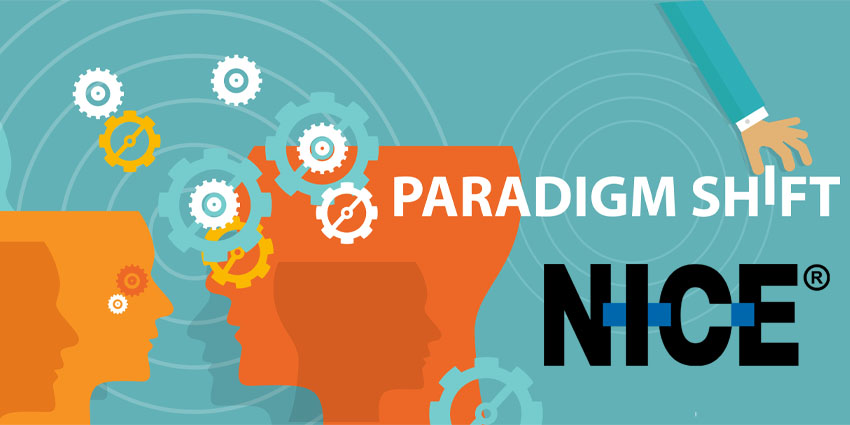Last week, 8×8 CEO Samuel Wilson called out NICE and RingCentral during the vendor’s latest earnings call.
During his opening comments, Wilson described NICE’s recent entry into the UCaaS market with a disruptive $5-a-month offering as a “marketing splash”.
Later, during the Q&A, when asked a follow-up question about NICE’s customer overlap with 8×8, Wilson alluded to NICE’s go-to-market partner, RingCentral, as a “certain company in Belmont, California, that starts with an ‘R’ and ends with ‘Central'(…) who suddenly decided they want to go in a different direction.”
Wilson also highlighted “vendors with subpar products that they like to talk about a lot using price” when answering a separate question about the impact of NICE’s new solution on 8×8’s sales.
“These are subpar products,” Wilson said. “I’d go so far as one customer called them crappy products. But it just slows down the sales cycle because they’re going to run a PoC, or they’re going to do whatever. I get what they’re doing; they’re just trying to use price to disrupt the market, and it just takes time to work our way through that. That’s what we see. We just see bad products at low prices, and you have to sell through it.”
Is NICE’s offering causing such a “splash” that it’s impacting sales across the market?
The UCaaS/CCaaS Combo
“When NICE launched its service, they were pretty vocal about being able to disrupt it at $5 a month,” Zeus Kerravala, Founder and Principal Analyst at ZK Research, said to UC Today. “RingCentral’s native UCaaS offering is still pretty new where I know 8×8 has spent a lot of time and a lot of years building its out.”
“So I’m guessing (Wilson) is trying to validate the fact that you just can’t jump into the UCaaS or the CCaaS business overnight and be as competitive as somebody who’s had their offering for a while. I think (Wilson’s) point is, ‘Yeah, the vision’s right. But we’ve been doing it longer than both of them.’ You can’t just jump into it and have a mature product.”
Kerravala highlighted that, in some ways, NICE and RingCentral have taken the same approach to the same problem: customers want an integrated UCaaS and CCaaS stack. “NICE did it with CCaaS first and then added what they’re considering a commodity UCaaS service. Then Ring, by all accounts, one of the leaders in UCaaS, added its own CCaaS product.”
“If you look at the Ring strategy, it was having OEM (original equipment manufacturer) NICE for a long time, but that eventually hit some limits. That’s why it had to go build its own. NICE has taken the same approach with an OEM of 3CX. I think if NICE was to ever really want to lead with that product, it’d have to build its own. But right now, NICE is just selling that product to its install base. You’ve got to be a CX1 customer to buy it.”
For Dave Michels, an industry analyst and expert with TalkingPointz, two simultaneous narratives are at play, including the “combo play of UC and CC” that Kerravala alluded to.
“The way it’s been for some time is that the smaller vendors offered the combo play, and the big CCaaS providers didn’t,” Michels explained to UC Today. “Genesys, NICE, and Five9 were all CCaaS specialists. UCaaS was beneath them. RingCentral resold NICE and targeted these smaller prospects as NICE was focused on the larger opportunities.”
Michels noted that most UCaaS providers have now expanded into CCaaS, but the big CCaaS companies were largely unphased. Then, NICE launched in UCaaS.
“That’s a big change,” Michels said. “It’s more like the ININ model, a simple offering that won’t meet everyone’s needs and will only be sold as a bundle.”
“Interactive Intelligence (ININ) had a simple UCaaS/voice offer that always showed up weakly in the (Gartner) Magic Quadrant, but they didn’t care. Customers who didn’t need extensive features were happy with a limited offer. For ININ, it was practically incremental, free revenue as the effort to deliver it was simple. Genesys killed that offer after it acquired ININ.”
“(NICE) launched it at what appears to be a disruptive price, but as it’s bundled, it’s hard to determine the real price. 8×8 (and others) had a simple differentiation from NICE (and others). It had UC/CC and competitive prices. NICE complicated that, but there’s still decent differentiation.”
UCaaS as a Commodity
As well as differentiation and UC/CC combinations, another key narrative both analysts cite is UCaaS’s potential commodification — a possible market trajectory Kerravala has been worried about for a while. If everyone has the same feature set, then “it’s really just the vendor with the lowest price that wins”.
“I think the fact that Microsoft’s been able to sell Copilot for $30 a month pretty successfully shows that there is still room for innovation, and customers will pay for it,” Kerravala expanded. “But you’ve got to be able to keep that innovation. I’ve long felt that there isn’t really any industry, except for maybe PCs, even there, that’s actually fully been commoditised.”
Kerravala asserts that if organisations drive enough innovation, customers will continue to pay the premium.
“I think in an effort to fight Microsoft Teams, a lot of UC vendors have gotten very aggressive with their pricing and bundled more and more features with their base license, and I caution them not to do that,” he said. “I think you want to charge where the value is, but in some ways, that’s become almost a de facto defence mechanism against Teams.”
Kerravala isn’t concerned about the CCaaS space because innovation is booming, but for UC, he’s cautious about whether businesses can drive enough innovation for customers to happily pay those premiums.
“If not, then NICE wins at that $ 5-a-month price point,” Kerravala said. “Or Microsoft continues to win because they give it away as part of the 365 bundle. But if you can create features that differentiate, and I think AI creates that opportunity, then customers are willing to pay for it.”
UCaaS as a commodity is on Michels’ mind as well — the second of his simultaneous narratives.
“Enterprise telephony is complicated, and new entrants typically have very simple capabilities,” Michels told UC Today. “A traditional PBX would boast thousands of features, and newer UCaaS offers had hundreds. The response is no one really needs thousands of features, and that’s true. However, lots of people need specific features, and that can easily add up to thousands of features.”
“Microsoft would say this with Teams (and its predecessors), but they don’t say it as much anymore because they have steadily been adding features,” Michels continued. “Last month, they added the ability to have a second personal/private line on a user’s phone. Features like these were standard/mature in the PBX era.”
Michels stressed that this is why UCaaS is not a commodity — because commodities sell on price.
“However, there are organisations that really don’t use any features, and for them, UCaaS is a commodity,” Michels elaborated. Similarly to ININ’s previous offering, NICE’s new product could signal UCaaS as a commodity.
Could NICE’s UCaaS Offering Last The Course?
Is NICE’s offering more than a “marketing splash” with an eye-catching price point? In the age of streamlined tech budgets and a cost-of-living crisis impacting much of the globe, both in personal lives and in enterprise, could a $5-a-month solution have a significant, sustained impact on the market?
“I think in a lot of use cases, the $5 price point works fine,” Kerravala said to UC Today. “For knowledge workers and people that are kind of UC-heavy, folks like you and me, we probably want to make sure we have a better feature set with more features. It’s important for the vendors to be able to differentiate whether they’re different. For the communications-heavy folks, we’ll pay the difference for better features.”
“The $5 price point is just fine for many casual users,” Kerravala added, suggesting use cases involving those who are task-based workers, working in retail, or just messaging with their head office.
“There’s a certain set of workers for whom good enough is good enough,” he continued. “I’m guessing that’s probably about a third of the industry today. To me, that’s the same audience that uses Google Docs, Google Sheets, and things like that, where you don’t really need to pay the premium for the better product. You’ll just pay for the good enough, and I think that’s where the $5 a month will disrupt.”
NICE’s entry into UCaaS prompts Kerravala to think that 8×8 and other UC vendors may sit up and take note.
“Have a skinny-down product without a lot of the features and offer a good enough price point,” Kerravala said. “Maybe it’s painful to do that, but different users have different needs, and NICE has just attacked one specific aspect of it. Maybe it’s something the others should probably look at.”
“NICE is a good company. They’re very well run. They’re smart, and they’re keeping the value where it matters.”









